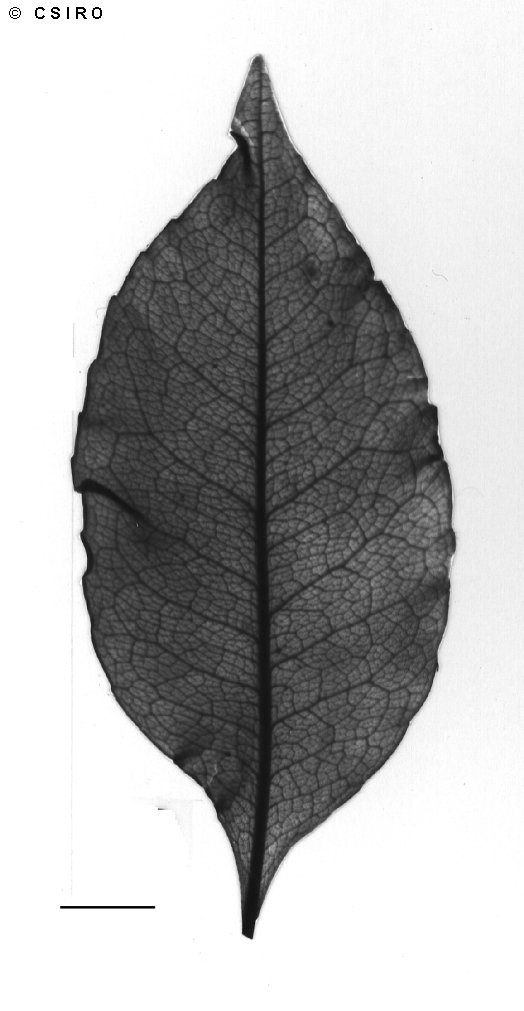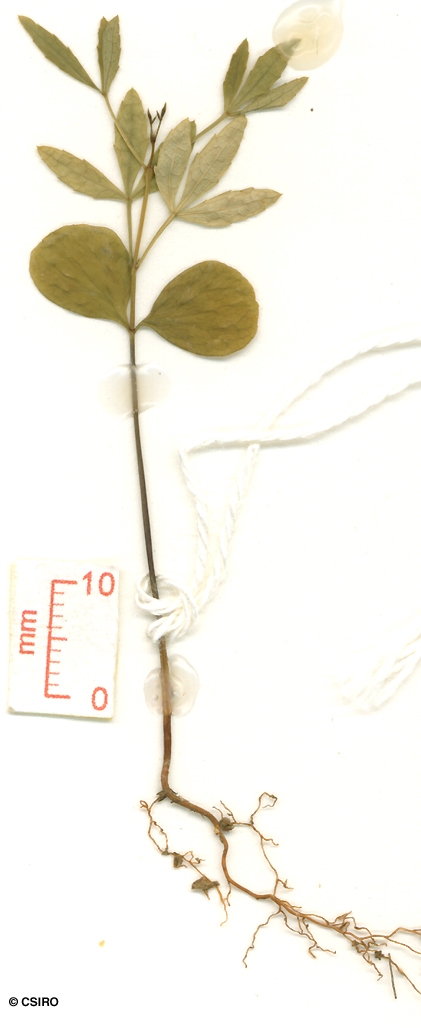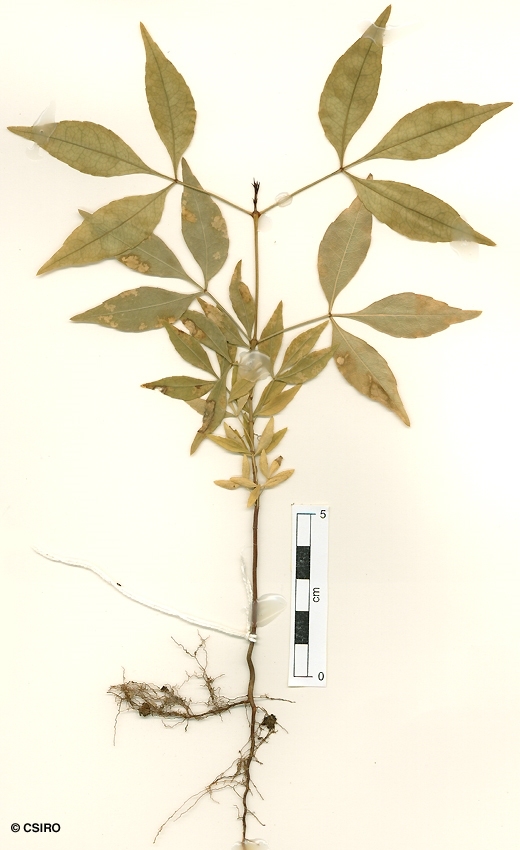Australian Tropical Rainforest Plants - Online edition
Ceratopetalum hylandii Rozefelds & R.W.Barnes




Rozefelds, A.C. & Barnes, R.W. (2002) International Journal of Plant Science 163: 665. Type: Qld, SFR 143, South Mary L.A., !6 deg. 30, 145 deg. 15, 1000m, B. Gray 1809, Oct 2, 1980; holo: BRI; iso: HO, QRS.
Faint almond odour in the blaze and a strong almond odour in the wood. A dark layer usually visible between the inner and outer blazes.
Leaflet blades about 40-90 x 20-30 cm. Leaflet stalk short. Midrib raised on the upper surface. Lateral veins forming loops well inside the blade margin. Compound leaf petiole channelled on the upper surface. Stipules triangular, about 2-3 mm long. Freshly broken twigs emitting an odour like that of almond (Prunus dulcis) essence.
Tepals about 2-3 mm long.
Fruits predominantly 4-winged, about 22-25 mm diam.
Cotyledons +/- orbicular, about 9 mm diam., petiolate. At the tenth leaf stage: leaflets sparsely toothed; lateral veins forming loops well inside the blade margin; compound leaf petiole somewhat channelled on the upper surface. Seed germination time 14 to 18 days.





